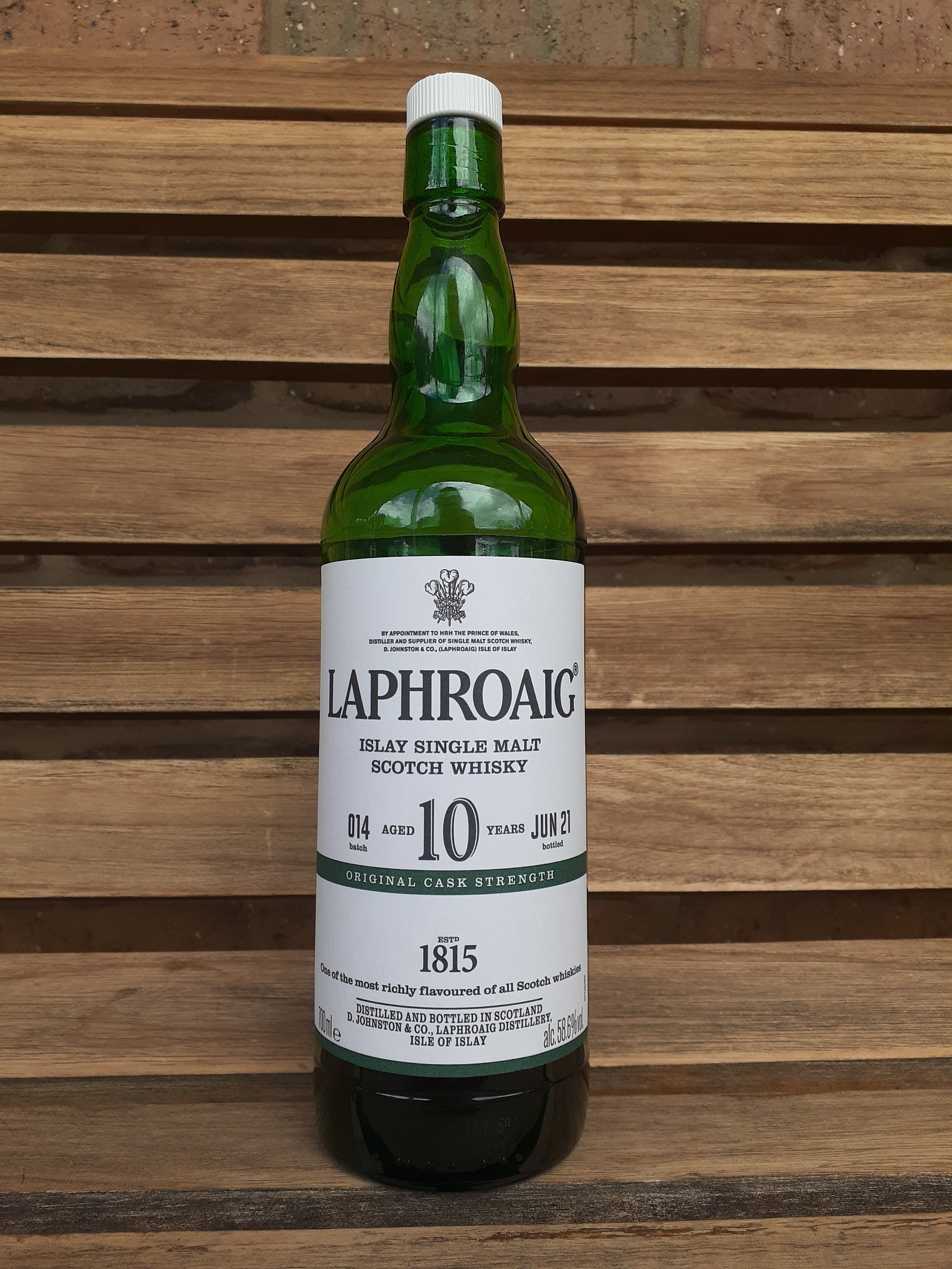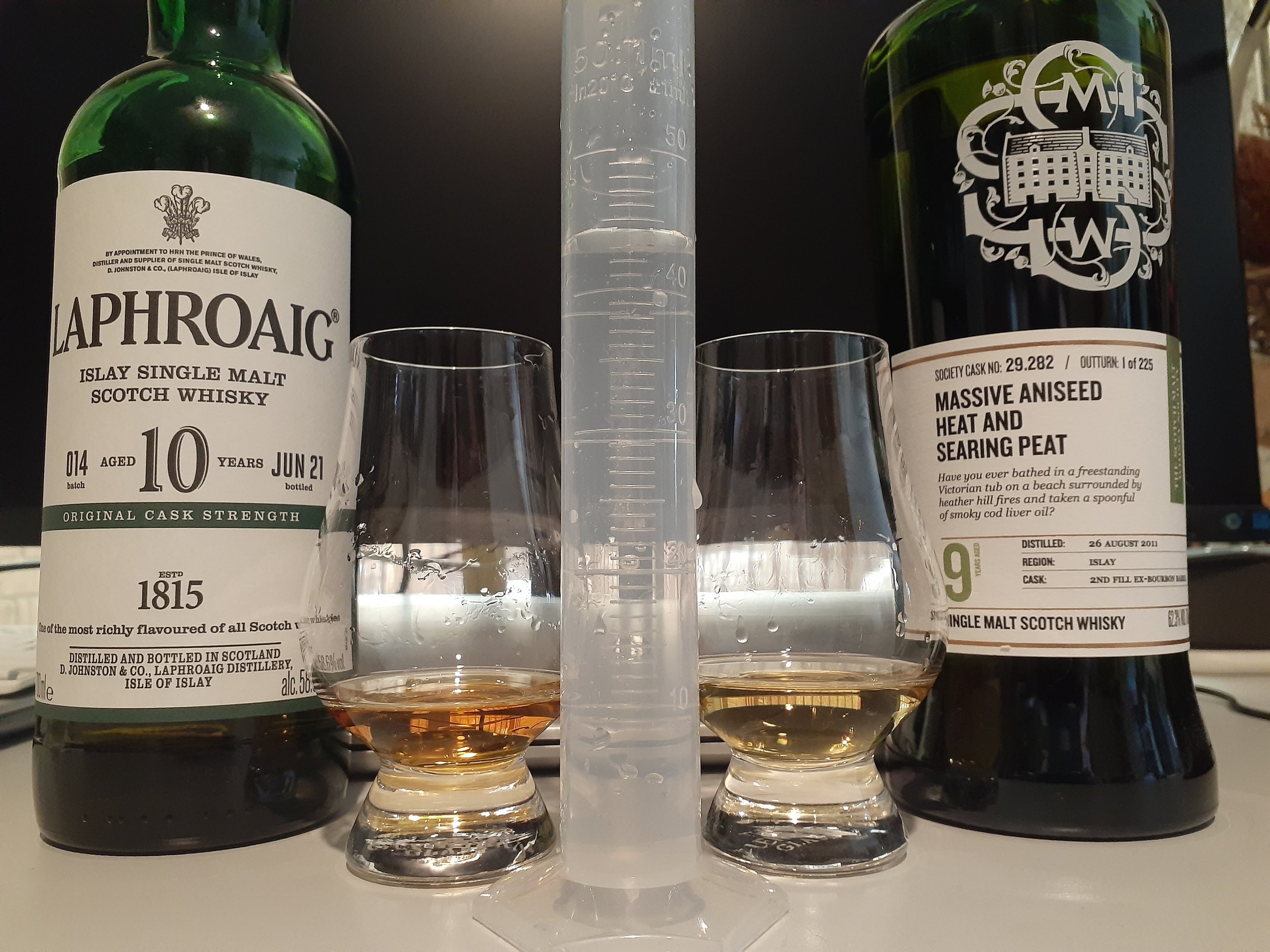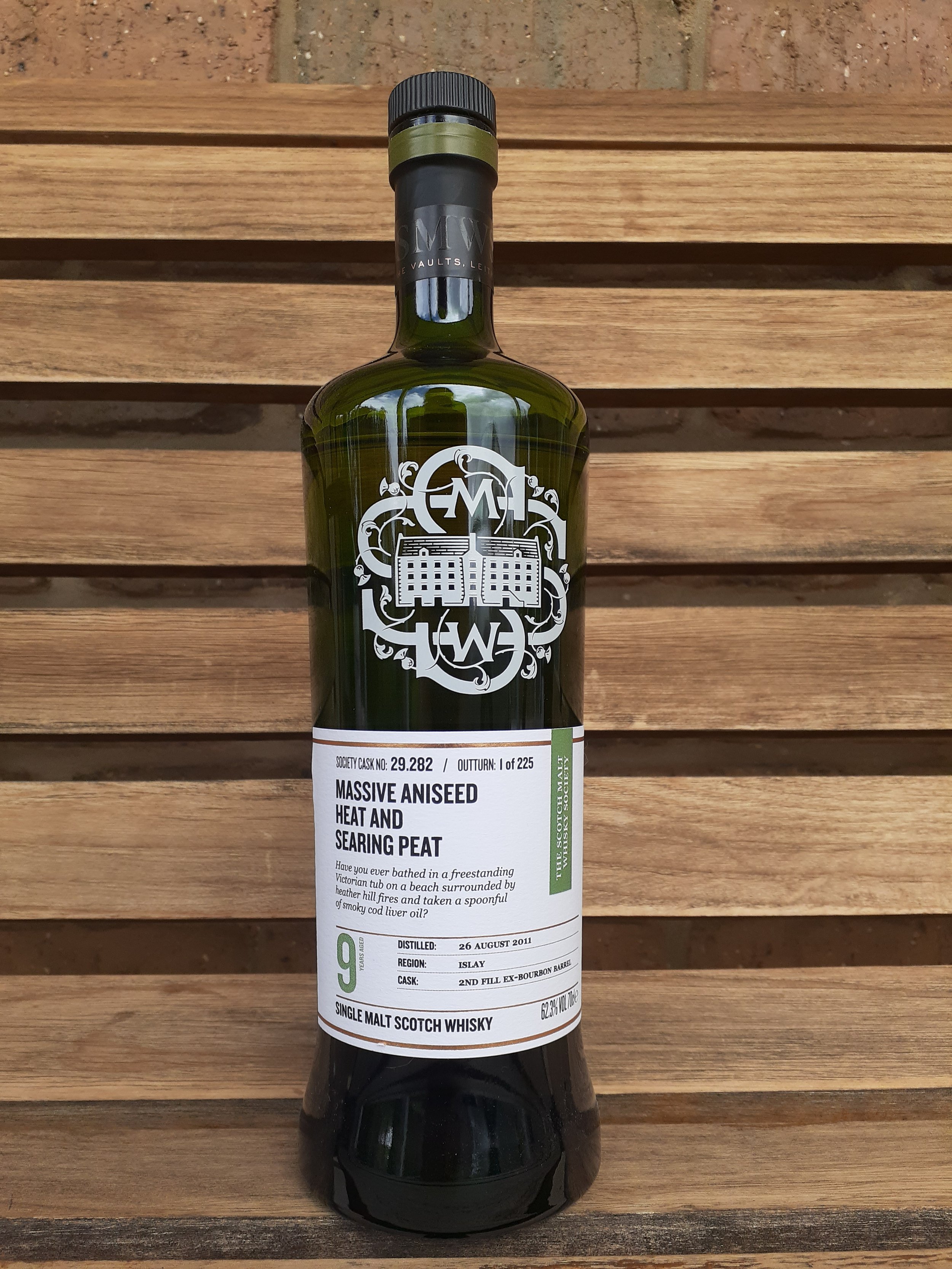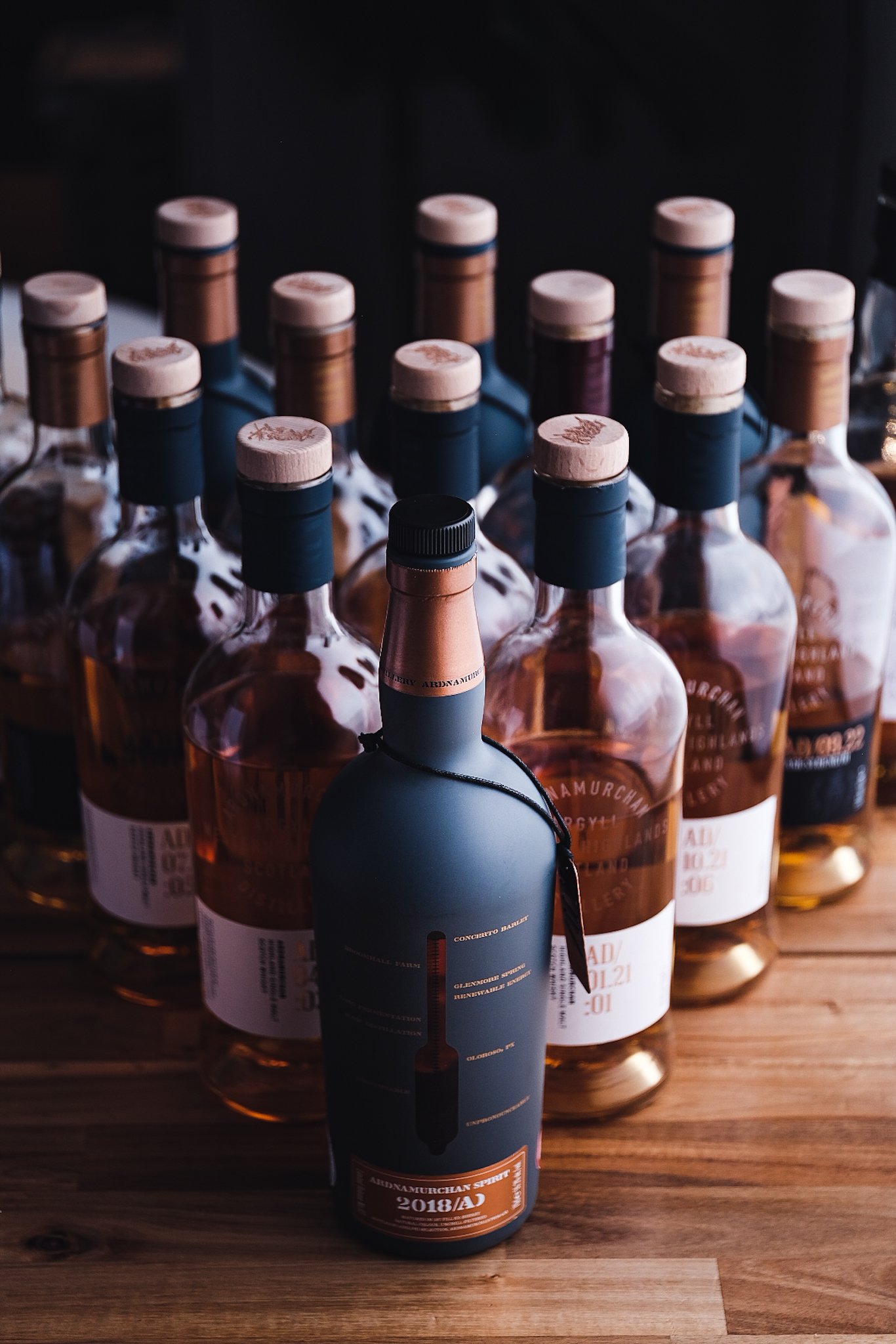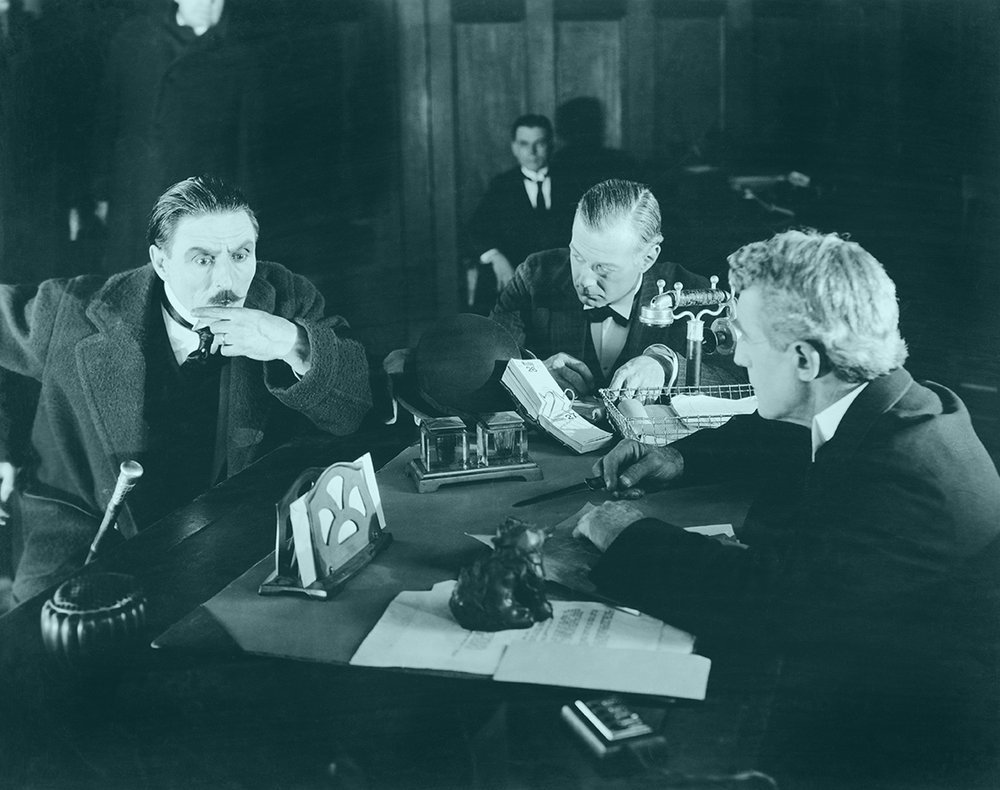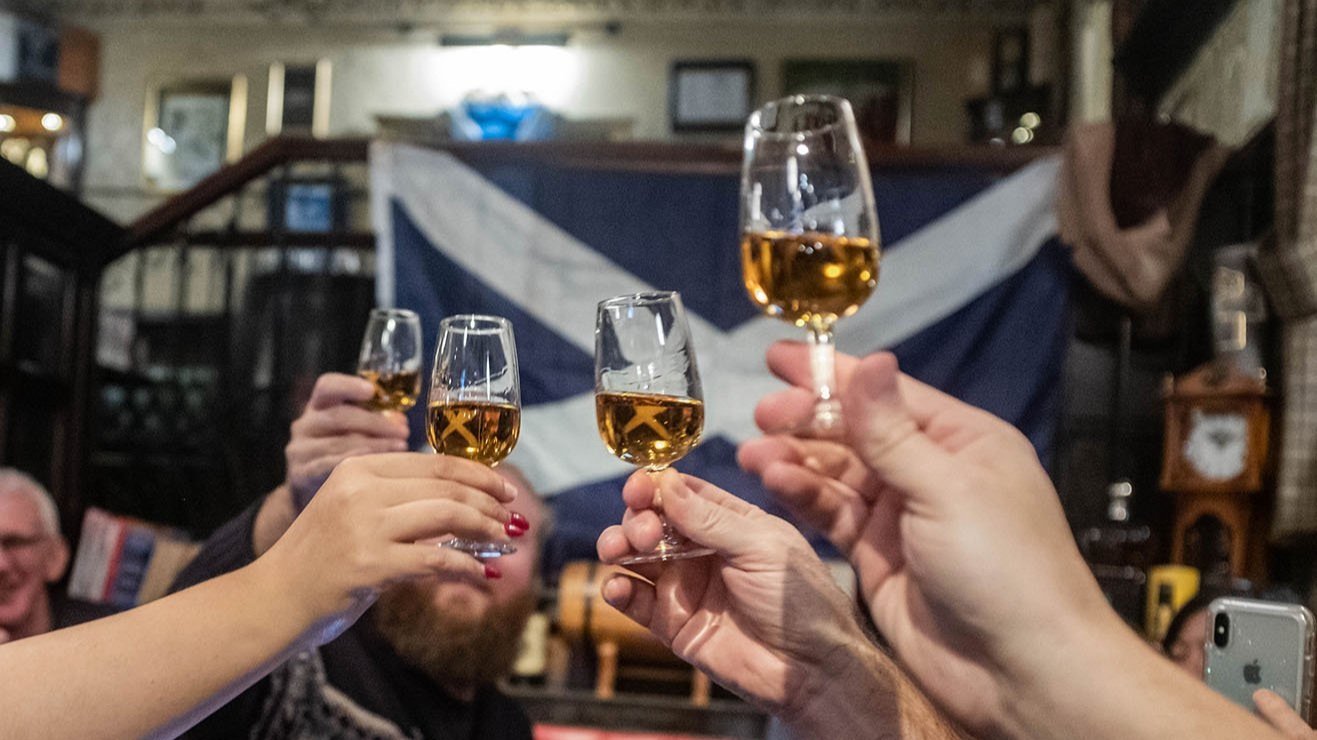Laphroaig 10 Cask Strength
Batch #14 | 58.6% ABV
Bonus Review: SMWS Laphoraig 29.282, Massive Aniseed Heat & Searing Peat
Score: 6/10
Good stuff.
TL;DR
Wibbly wobbly micro-phasey separation stuff
How often do you pour a dram with water nearby?
The occasion doesn’t always call for it - a relaxed glass over a bar or on the couch in front of the TV. But when seriously thinking about whisky, smelling and tasting from a good glass, does the pipette get a rinse off? If not, it might be worth a second thought.
Water is often discussed in whisky - traditionally for Scotch, it’s been used to convey romantic notions for our precious liquid’s origin with mentions of passage over craggy scenery, heather-laden peat and deposits in ancient lochs. That’s all perfectly good mind you, but as usual what’s marketed and what actually happens are distinctly different things. Peat components contributed by the water source give no smoky phenols to the distillate since the lignins and other phenolic precursors do not undergo pyrolysis, however the higher proportion of organic material may contribute to fermentation characteristics (ie terpene, thiol and other volatile compound synthesis) by biotransformation processes. Similarly, the mineral content and pH of the water can affect the fermentation profile as touched on in my Bowmore article. Calcium ions stabilise and increase the efficacy of mashing enzymes, increase yeast flocculation and acidify mash water. Sulphate ions in high concentrations may inhibit bacterial colonisation, affecting late stage lactic acid bacterial fermentation. There is an obvious degree of speculation here as to the limit of these effects, since I have been unable to find organoleptic data on the impact of these in the final whisky.
Water profiles might contribute more directly to organoleptics through the addition to new make for cask filling strength adjustment and similarly for bottling strength adjustment, however the vast majority of distilleries appear to run reverse osmosis or other intensive filtering regimes (multiple carbon filters with UV are also popular) which render the water functionally devoid of flavour. A notable exception is Ardnamurchan, who use minimal filtration and UV sanitation only for the dilution of their products.
This is all to say that we should, as always, take the marketing drivel with a hefty hunk of brewing salts (see what I did there?) and investigate as much about distillery practice as possible before drawing up any hypotheses. But what I really want to talk about in this article is not water’s effects on production but rather the curiosities of water’s influence on how we actually smell and taste in the glass - if you’re not interested in the science or mechanics please feel free to skip to the summary just before the review. Right, let’s begin.
“In time and with water, everything changes”
To lay the groundwork for this discussion, it’s important to first understand a few concepts. Although we usually consider ethanol and water to be entirely uniform in their miscibility, this is not the case. Due to ethanol having both a hydrophilic hydroxyl group and a hydrophobic carbon chain tail, it is classified as an amphiphile. This has given rise to much research in the field of microscopic water-amphiphile interactions, with many varying models posited which explain certain anomalous behaviours to varying extents. I’ll do my best to surmise the outcomes of this, however the mechanics involve interactions with explanations from fairly high degrees of physics and chemistry, so oversimplification is unavoidable.
Firstly, water-ethanol mixtures don’t observe the volume and concentration behaviours we might expect. One can not, for instance, add 100 ml of water to 100 ml of a 50% ABV water-ethanol mixture and return 200 ml of a 25% ABV solution. Rather, at room temperature and sea-level pressure we return approximately 195.2ml of 25% ABV liquid. This is due to a contraction mechanism which is nicely summarised in this thread; essentially, the polar nature of water means even in its liquid state it orients itself into a quasi-crystalline matrix structure (on average) which creates enough space for the hydrophobic carbon chain portion of ethanol to occupy. A consequence of this, as postulated by Pecar and Dolecek is that pure water structures possess cavities that become occupied by ethanol, which subsequently stabilise the overall structure to a decreasing and limited degree as ethanol concentrations increase. This behaviour also relates to the non-linearity of this contraction mechanism. As a horribly crude analogue, think of a jar full of sand into which one then adds water. Up to a point of saturation, the water can be added without drastically changing the volume of the mixture as it fills the gaps between the grains of sand.
As an interesting factoid, the work of Franks and Johnson found inconsistencies in part of the data sets from Osbourne et al which form the basis for the tables still used for alcohol content evaluation in the US. Hardly the most pressing example of the US failing to update its laws in accordance with the progression of science, but still worth noting. Yes, you can infer a bitter and cynical tone here.
Another relation to this non-linear behaviour is the dynamic viscosity of ethanol-water mixtures by concentration. Below, we can see the change in viscosity as a function of ethanol concentration in water under standard atmospheric conditions.
This contraction mechanism is far from the strangest of suggested structures for ethanol-water mixtures; other suggested models include partial transient micellar behaviour (true, stable micelles do not form), structures made from polymers of ethanol surrounded by water molecules which rapidly form/reform (in the order of 100 nano-seconds lifetimes) and other complex Clathrate structures. A significant impact of this nonlinear viscosity relation is the perceived mouthfeel and texture of whisky as a function of concentration. There are naturally many other compounds contributing to mouthfeel which are significantly affected by dilution, however the interplay of those is complex and beyond the scope of this article, so here shall only go to suggest the degree of complexity at play.
The key takeaway here is that these water-ethanol structures vary as functions of both concentration and time, meaning they are dynamic in overall nature. The particularly key structures suggested are thus; for low concentrations of ethanol, individual molecules and perhaps small bundles are bound by tight hydration spheres or “icebergs”. As ethanol concentration increases, larger clusters are formed until 40-45ish% ABV when micelle and/or other agglomerate structures may be formed. Just under 60% ABV, the hydrogen bonding water network is disrupted and structural behaviour is more ethanol than water driven.
So now that we have a rudimentary understanding of how water-ethanol mixtures behave, let’s consider what happens when other bits get added to the mix.
One of the most critical organoleptic components that interacts with water-ethanol mixtures in whisky is the class of ethyl esters. Even carbon chain ethyl esters are the most abundant type of ester in whisky due to the high concentration of ethanol and even numbered carbon chain fatty acids. These saturated even-carbon fatty acids are made by yeasts during fatty acid synthesis (required for their highly important cell membranes, among other things) and carbon chain elongation from a cyclic series of primarily acetyl-CoA facilitated reactions, with various other enzymes and cofactors involved. Each turn of the cycle increases the carbon chain length by two.
Official vs. Indy - a bonus review for all those paying attention in class
These esters exhibit amphiphilic properties and as a result, ethyl esters also have a tendency to form micelles to varying degrees as a function of their carbon chain length, concentration and environment (water-ethanol ratio, temperature and pressure). The first two of these factors operate in a simple product equation; x.y=A where x is the molar concentration of a given ester, y is that ester’s activity coefficient (dependent on carbon chain length) and their product A is the activity value of that ester.
Given an otherwise fixed environment, each ethyl ester has a critical micelle concentration (CMC) at which point any higher concentration of the ester will tend to agglomerate in a micelle such that activity values plateau. As mentioned, the carbon chain length for the ethyl ester dictates the concentration at which this CMC is reached by varying the activity coefficient. The factor for this activity coefficient is roughly en (with e~2.7) where n is the number of carbon atoms in the carbon chain. Conversely then, at a fixed activity value the concentration to maintain said value changes by a factor of e-n.
That is to say, an ethyl ester with 8 carbon atoms in its chain reaches its CMC at about 14.5% of the concentration that a 6 carbon chain ethyl ester does, although there is about a 30% range of CMC activation values (0.7≤A≤1). For mixes of esters however, the CMC is reached later compared to the sum of individual components and we see increased non-linearity- the larger the difference in carbon chain length of the esters, the larger the effect of the larger ester on the smaller. Under these circumstances, the CMC is reached at approximately the point where the sum of all of the present esters’ activity values (∑[i,n]{x(i).y(i)}) equals 0.7.
The presence of oak extracts such as lignins, tannins and pH reduction also alter activity values and CMC through complex nonlinear interactions. Due to these varying tendencies for ethyl esters to agglomerate into micelles as a function of abundance (concentration), carbon chain length and environment we see a range of distributions for said esters between their agglomerated and free phases. In 3 year old malt whisky, Conner et al found 99% of ethyl hexadecanoate (16 carbons in chain) in the agglomerated phase, but only 28-42% of ethyl decanoate (10 carbons in chain) in the agglomerated phase- 28% for old refill casks, 42% for new charred barrels.
It is vitally well worth noting here that only esters in their non-agglomerated phases freely partition from the liquid phase into the gas phase, and are thus detectable by nosing. This is really where we get to the meat of this article - the impact of dilution on the distribution of ethyl esters is that as the concentration of various ethyl esters are brought below their CMC levels, the micelles burst.
Also, pH (which impacts degree of hydrogen bonding, reducing volatility of compounds with polar interactions at lower values) is increased and ethanol-ester interaction is reduced; resultantly those esters’ activity values increase as a function of their carbon chain length (ie longer esters are more impacted than shorter ones) and can more freely partition into the vapour phase and thus can be better smelled. To give an idea of how drastic this effect of ethanol-water dilution is, ethyl acetate (n=2) sees a factor of roughly 10 times increased activity over the range from about 17-80% ABV (ten times higher at about 17%) whereas over the same range ethyl dodecanoate (n=12) sees about 106 (a million) times higher activity. This also doesn’t correlate to organoleptic impact with any linearity since each ester has differing volatility, plus OAV ranges are non-linear for their quality of sensation, however the effect is still drastic. It should also be noted that over ethanol-water concentration ranges where ethanol micellar structures are expected, the micellar structures may solubilise and “Trap” ethyl esters, further compounding the effects of dilution on micelle bursting. This latter mechanism may also be true for lignin and other oak derived agglomerations, although I was unable to find references accounting for this.
Ethanol also keeps esters soluble in their non-agglomerated state depending on concentration and carbon chain length; indeed certain larger esters will form micelles if the concentration of ethanol falls too low. We whisky drinkers are most familiar with this as the haze that forms for non-chill filtered whiskies during dilution (the point this happens at depending on the temperature of the liquid). The principal causes of this chill haze are ethyl dodecanoate, ethyl hexadecanoate and ethyl palmitoleate (the same compound as ethyl hexadecanoate but with a double bond between carbons 9 and 10).
These chill haze components are what are most significantly removed by chill filtration- to the detriment of the drinker. It should be noted as a digression here that dilution at the bottling plant even without chill filtration is liable to volatilise a proportion of flavour active congeners including esters, none of which can be reclaimed in the liquid for the consumer’s enjoyment.
Think of this the next time someone asks “Why bother buying cask strength whisky if you’re just going to dilute it anyway? Might as well let the bottler’s do it for you.”
Even when the overall concentration of a whisky is not impacted, the addition of water causes localised dilution and micelle bursting which achieves the same organoleptic effect; shorter esters are less affected while larger ones see more activity increase and comparative volatilisation of non-agglomerated components. This is one of the main mechanisms by which even small water additions open up the nose of a whisky.
Esters aren’t the only compounds affected by these mechanisms- fusel oils and aldehydes also see activity variation due to agglomeration mechanics, ethanol-water interactions and indeed complex interactions between esters, aldehydes, fusel oils and wood extracts. Hexanal, for instance, significantly reduces the activity value of ethyl esters when an agglomeration phase is present. Larger linear aldehydes are not observed to have this effect and the particularly large ones have a slight inverse effect. Conner et al suggest this is due to the highly polar nature of carbonyl compounds (ie aldehydes) dominating their amphiphilic behaviour with shorter carbon chains, but the hydrophobic tail components dominating behaviour in the larger molecules (decanal, dodecanal etc). This may also explain the slightly paradoxical effect of oak increasing or decreasing activity values for esters and alcohols depending on context; the behaviour may relate to some ratio between hydrophilic and hydrophobic effects in aldehydes (ie vanillin, furfural and syringaldehyde), lignins and tannins etc. These and the changes in pH and ethanol concentration over time are thus suggested to significantly affect organoleptics; less so through changes in bulk chemistry but more so in the way we experience volatiles through their structural arrangement.
A last component to our sensory experiences worth consideration here are the phenomena of surface tension and the resulting distribution of molecules in the liquid phase of whisky. Amphiphiles including alcohols, esters and certain phenols over certain ethanol-water concentrations mobilise themselves to the liquid-air interface to minimise their enthalpy. By orienting their carbon chains toward the air and the polar ends down towards the polar bulk phase, they minimise hydrophobic interactions with water in a similar way to micelle agglomerations.
Generally this migration predisposes flavour active compounds to partition into the vapour phase above the interface more readily, however not all of them are able to. For some compounds (at room temperature) there is insufficient energy to overcome bonding action, i.e. surface tension. An ideal example for whisky explaining the importance of this mechanic is guaiacol; although technically a volatile phenol, it does not readily volatilise into the vapour component in the headspace over the usual range of bottling strengths for whisky and thus does not contribute significantly to orthonasal olfaction. From 45-59%ABV it preferentially distributes to the interface (at 59% and above it is better solubilised by ethanol in the bulk of the liquid as micelles and other solvation shells) but does not readily volatilise. This tendency to migrate to the interface does perhaps increase the organoleptic impact of taste however, since the surface of a liquid is sipped in greatest proportion relative to the rest of a liquid.
Summary
The addition of water to whisky not only reduces sensory dampening due to ethanol, but physically alters the chemical arrangement of the liquid and its resulting vapours. Dilution can reduce the solvent qualities of ethyl acetate while promoting fruity, floral and other desirable notes through organoleptic enhancement of larger ethyl esters. When added in the right ratio, it can also enhance mouthfeel and texture by changing the viscosity of ethanol-water mixtures and the structural alteration of solute composition. One of the key factors in these alterations is the formation and bursting of micelles at differing water-ethanol-solute ratios. In short, adding water significantly alters our perception of whisky through physical mechanisms and experimentation with dilution is thus encouraged.
Review 1/2
Laphroaig 10yo Cask Strength, Official Bottling, Batch 14 58.6% ABV
£80 or less (Paid AUD$205)
I am a self proclaimed Laphroaig fan. It is in many ways the most Islay of Islay distilleries, with very arguably the most of the whisky’s modern character dictated by peat and phenolics. The fact that they still use their own floor maltings which produce a different phenol profile (see this Octomore feature) and take later tails cuts than essentially anyone else help to feature this.
The marketing and bottling decisions from Beam Suntory leave a few things to be desired much of the time, however their higher ABV age stated releases are usually very good. For many (myself included) this is no more true than for their age statement cask strength bottlings, notably the various 10CS and 25CS batches. This batch 14 is the first bottle I’ve owned since Australia apparently doesn't merit distribution. Again, tut tut Beam.
I have tried a couple of earlier batches (no idea which ones) over bars that have squirrelled some grey imports away, all with great enjoyment. The expectations were commensurately high when I bought these bottlings, particularly the SMWS single cask which pours a colour indicative of minimal oak handling. The official bottling might see similar oak interaction hypothetically with colour being no indication since they haven’t seen fit to declare a lack of E150a. You’ve all suffered enough of my incredulous waffling already, so shall we jump into some tasting?
Score: 6/10
Good stuff.
TL;DR
Deserves a 7/10 but costs too much near me
Nose
Well, this doesn't have quite as pronounced a medicinal tone as expected. Sure, there's moderate TCP and embrocations, but it's not particularly pronounced. Continues with green peppercorn tree resin, some brominated phenols then ashy smoke and a touch of sandalwood and sawdust. Not the most complex, but what’s there is good, minus the sawdust.
Palate
More typically Laphroaig with increased medicines on retronasal, plus generally briney, smokey and ashy. Picks up a small plastic-esque mezcal tone, less so than its counterpart. Otherwise there's pepper, moderate lemon oil, asphalt, touches of furikake and a slight burnt meat/heavy roast coffee (thiazoles/benzothiazoles?) tone in the finish that lends some good phenolic bitterness, although the oak gets a little pointy and exacerbates this.
The Dregs
A little water (say, 5% v/v) helped immensely and woke up the cresols. The nose is still nowhere near as expressive and diverse as the SMWS, but the dilution does help it to more clearly express the individual elements. Taking it down more significantly (45%ish) unlocks a caramel sauce and smoked fish tone, plus a little fresh dill. It also restricts the bitterness on the finish a touch whilst promoting some green floral hints through retronasal. To me it drinks best in the 45-50%ABV range, but tinkering with it was rewarding and I’m sure others probably would have preferred it lower. This is a good whisky and purely on smell and taste warrants a 7 to my palate. The issue is that I paid about $20 more for this locally than I did the same year’s release of Lagavulin 12CS, and I just prefer that whisky for my money- by a fair margin actually. I’ll also add that my memories of previous batches have been more positive, though in all fairness I haven’t had the opportunity to do a side by side. If you have had the opportunity to do so, pretty please with cherries on top let me know your thoughts in the comments!
Score: 7/10 (6/10) TK
Review 2/2
Laphroaig SMWS 29.282, Massive Aniseed Heat & Searing Peat, 62.3% ABV
£sold out (Paid AUD$210)
Score: 8/10
Very Good Indeed.
TL;DR
Cracking, my favourite Laphroaig in the cellar
Nose
Definitely Laphroaig in profile, but there's some strong Ardbeg tones in there too. Under the medical cresols and brominated phenols some very nice natural tars, juiced limes with their oily peels, extreme coastal tones a la seaweed and fish smoked over a bonfire. With time in glass comes hessian, smoked almonds, peated malt grist, indeed a little sweetened black licorice and pine ash bordering on lapsang souchong. Incredibly bright and filled with top-note flare compared to the OB; more vivacious.
Palate
Huge. Smoking thai-sauce marinated fish using seaweed (again, Ardbeg) whilst drinking sweet malty rauchbier and dunking a finger lime in it for good measure! Or something equally unlikely…
Also some good esters leaning to stone fruits in the vein of peach. Back to tar, particularly pine tar, then some mezcal vibes with a plastic/rubbery phenolic youth, Asian broths plus old metal toolbox and used engine oil. Utterly bludgeoning, but maintains its fresh brightness- the citrus elements are key.
The Dregs
What a whisky. Some might level the criticism that it seems a little young, and that’s probably valid to a degree. For me though this sits in a superb spot where the problematic new make elements have dissipated and the phenolics are at their purest bellowing volume. That integrated with the brilliant citrus, tar and stone fruit ester tones are very reminiscent of Ardbeg 10 which I could wax lyrical the whole length of this article over again. The interplay with water is great fun pretty well all the way down to 40%; some moments the peat is up, others the citrus and in the high 40s the fruits and malt sweetness get a nice lift. My preference is around 55-60% with more aromatics and texture on the lower end, however the sheer brutality of the phenolics shows most prominently on the higher end, particularly on the palate. The score is well earned here, even with the offset allowed for the high pricing. Considering it’s a single cask indie though, I’m more prepared to accept the price compared to a release directly from Beam Suntory with fewer middle-men driving up the price. Admittedly a proportion of that price inflation is the grey import, since it’s currently sitting on The Whisky Exchange at about 74 quid.
Anyway- cracking whisky, my favourite Laphroaig in the cellar.
Score: 8/10 TK
Tried this? Share your thoughts in the comments below.
-
Dramface is free.
Its fierce independence and community-focused content is funded by that same community. We don’t do ads, sponsorships or paid-for content. If you like what we do you can support us by becoming a Dramface member for the price of a magazine.
However, if you’ve found a particular article valuable, you also have the option to make a direct donation to the writer, here: buy me a dram - you’d make their day. Thank you.
For more on Dramface and our funding read our about page here.

